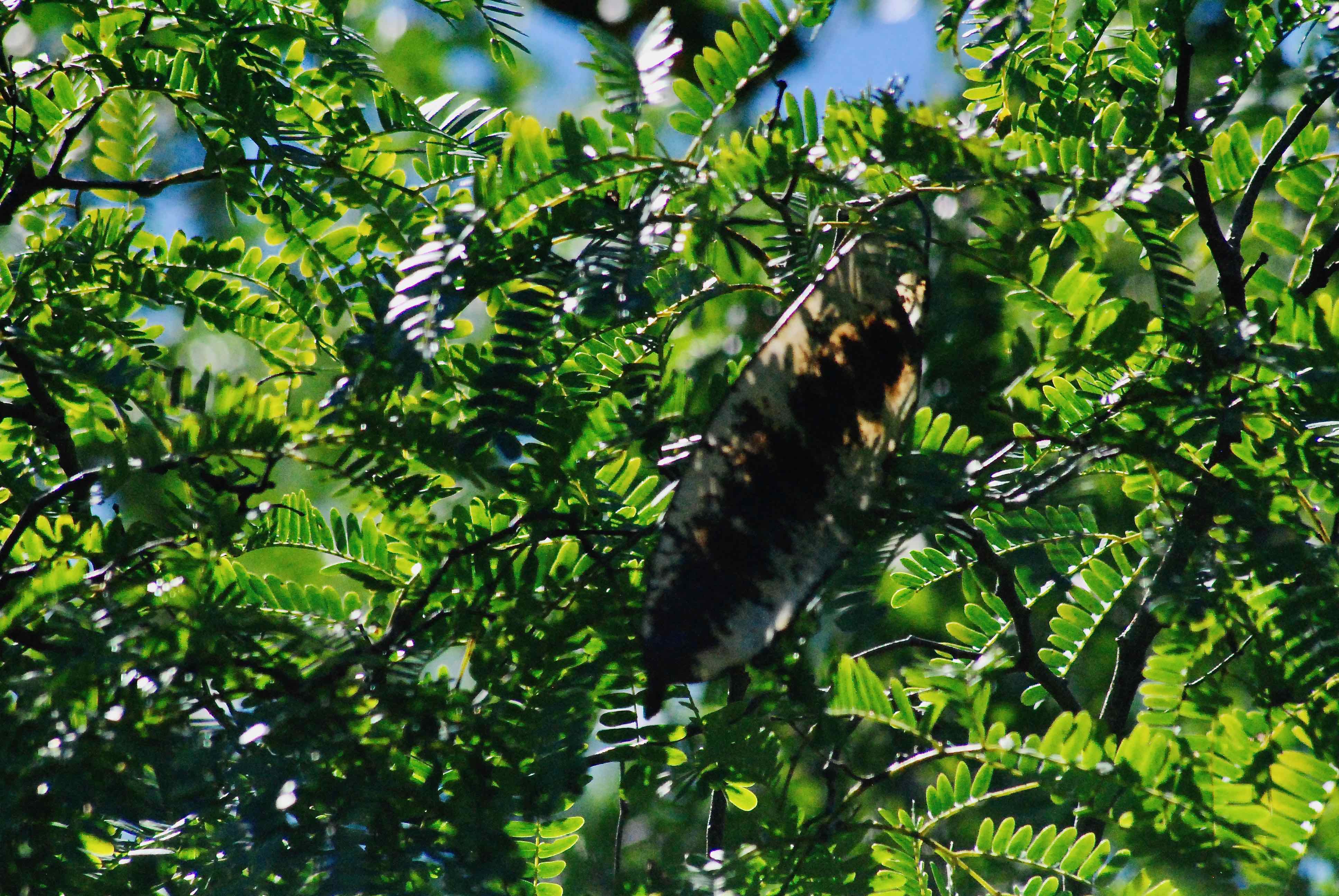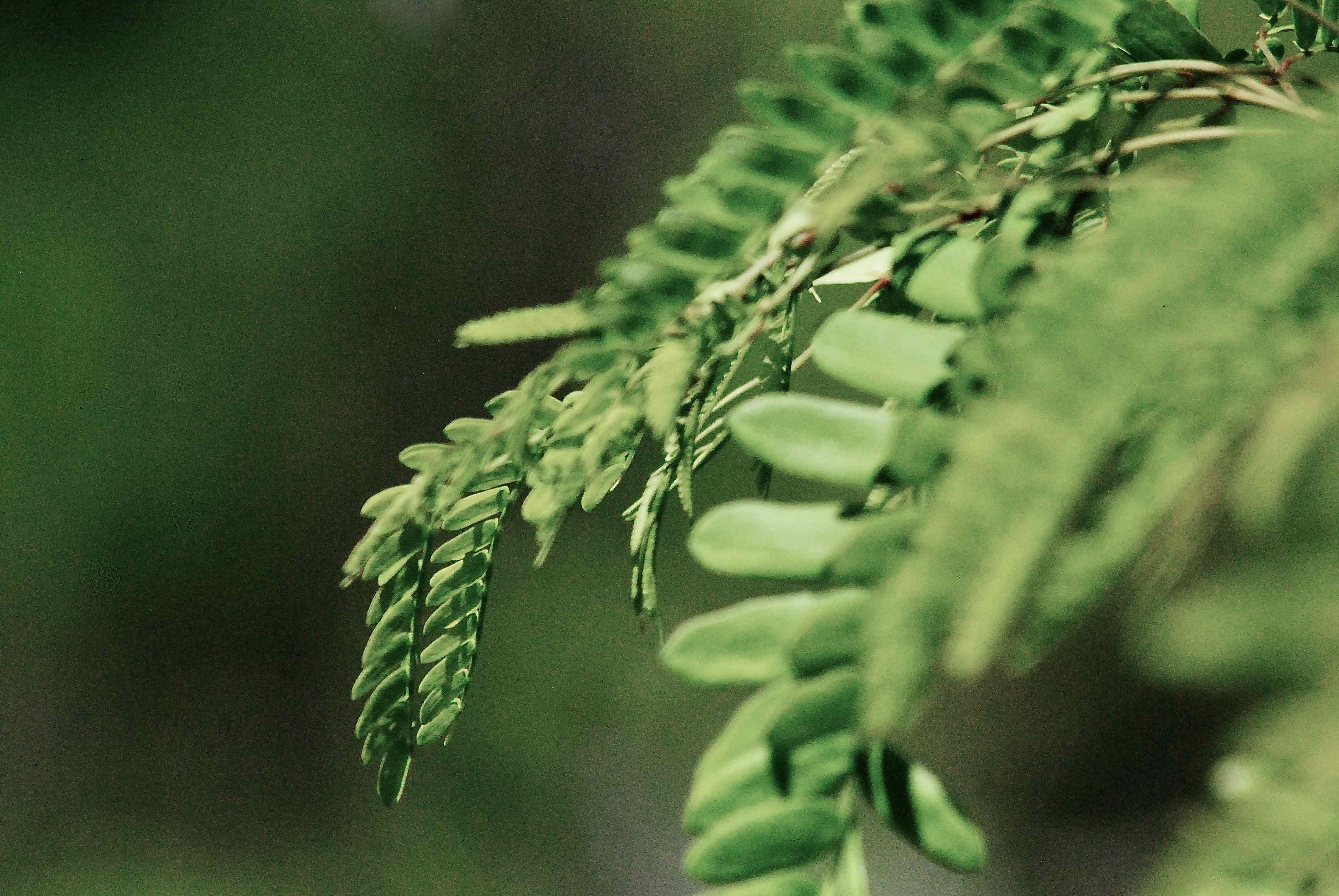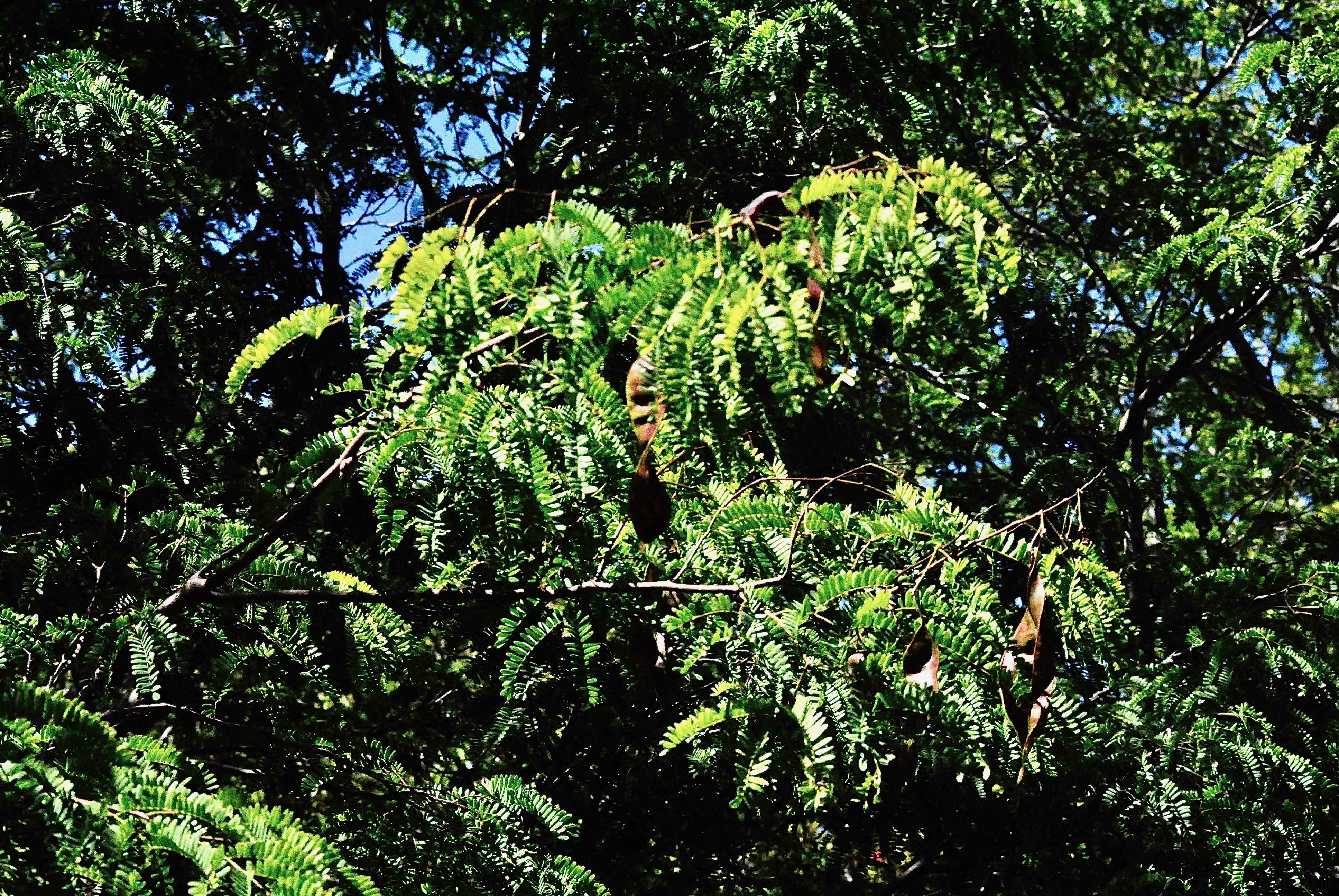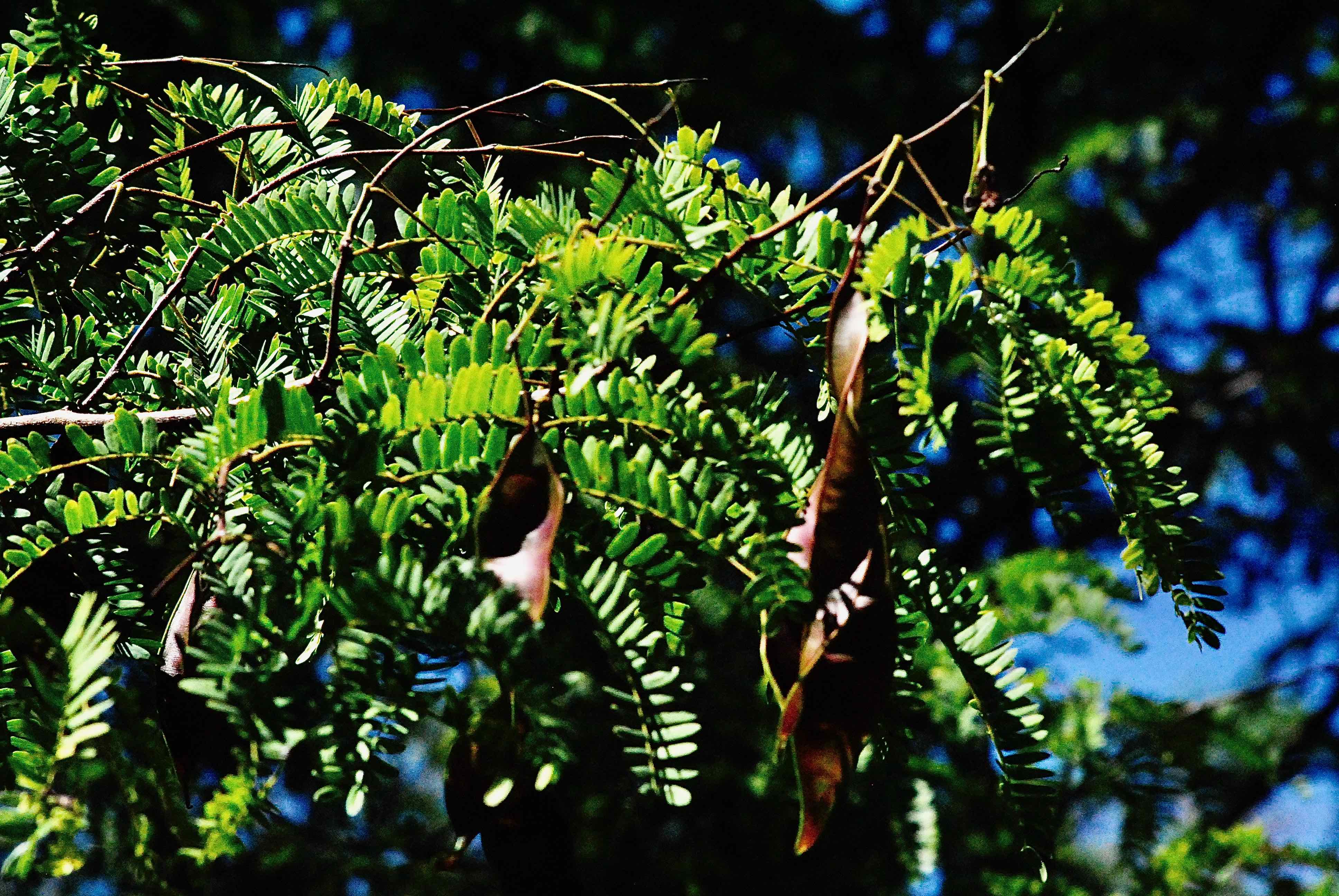
Tamarind, photographed at Oleta River State Park, North Miami, Miami-Dade County, in May 2014.
There are few trees more important to more people than this guy, Tamarindus indica. Or in plain Arabic, tamarind. It's food, fuel, medicine and the raw material for furniture, tools and dyes. Indirectly it can provide the clothes on people's backs. In parts of the world, it's considered sacred.
Its value in the United States is kind of under the table, for lack of a better term. It's there, but more covertly than it is elsewhere. Tamarind is not native to the U.S. and it's distribution in the wild here is pretty much limited to Florida south of Lake Okeechobee. It cannot tolerate cold for very long.
It is a native of tropical Africa as far north as Sudan. It's been in India so long that it is thought of as a native tree, but in fact it is introduced, as it is throughout warmer parts of Asia. It's so associated with India that the word, tamarind, is Arabic, meaning date of India. In the 1500s, it came to the New World, and quickly became part of the culture as it had elsewhere.
Tamarind is a massive tree, growing as tall as 100 feet, with a crown spreading as much as 40 feet and a trunk 25 feet around. It is a member of the pea family, fabaceae, and has compound leaves typical of the family. It's used here both for the fruit it bears and the shade it provides. It flowers in the spring and summer, which produce long seed pods that turn from green to brown when ripe and are filled with a sweet-sour paste. As we can attest, it's delicious stuff. Young pods are used as seasoning, cooked with rice, fish or meats. In the Bahamas. full-sized unripen pods are roasted in coals until they burst, dipped in coals and eaten.
In India, young leaves, seedlings and flowers are cooked and eaten as greens and in curries. In Zimbabwe, the leaves are added to soup and the flowers are an ingredient in salads. In the Americas, tamarind juice is sold commercially, as is tamarind soda. And pretty much everywhere, the paste inside the pods is eaten like candy.
It's a healthy food as well, containing iron, thiamine, niacin, riboflavin, calcium, phosporus and Vitamin C. It's also packed with antibacterial, antiviral, anti-oxidants, anti-inflammatory, antidiabetic, antimalarial and a bunch of other anti- compounds. Which is why it's widely used medicinally — to treat wounds, stomach disorders and other problems.
Dyes are made from the leaves and flowers. In Asia and Africa, the leaves are fed to silkworms. Glues, varnishes, oils and stabilizers are made from the seeds. The wood is prized for furniture and boat building. The dense wood is difficult to work with, but the heartwood is said to resist rot.
During World War II, tamarind wood was used as a source of fuel for gasogene-powered trucks in India. The wood was heated to produce combustible gases, which were then burned in the engine to power the truck.
The Gabada tribes of the Andhra Pradash region of India believe spirits live in the trees, and during a certain festival, worship tamarind as the embodiment of a goddess.
Click on photo for larger image
Links for Tamarind



